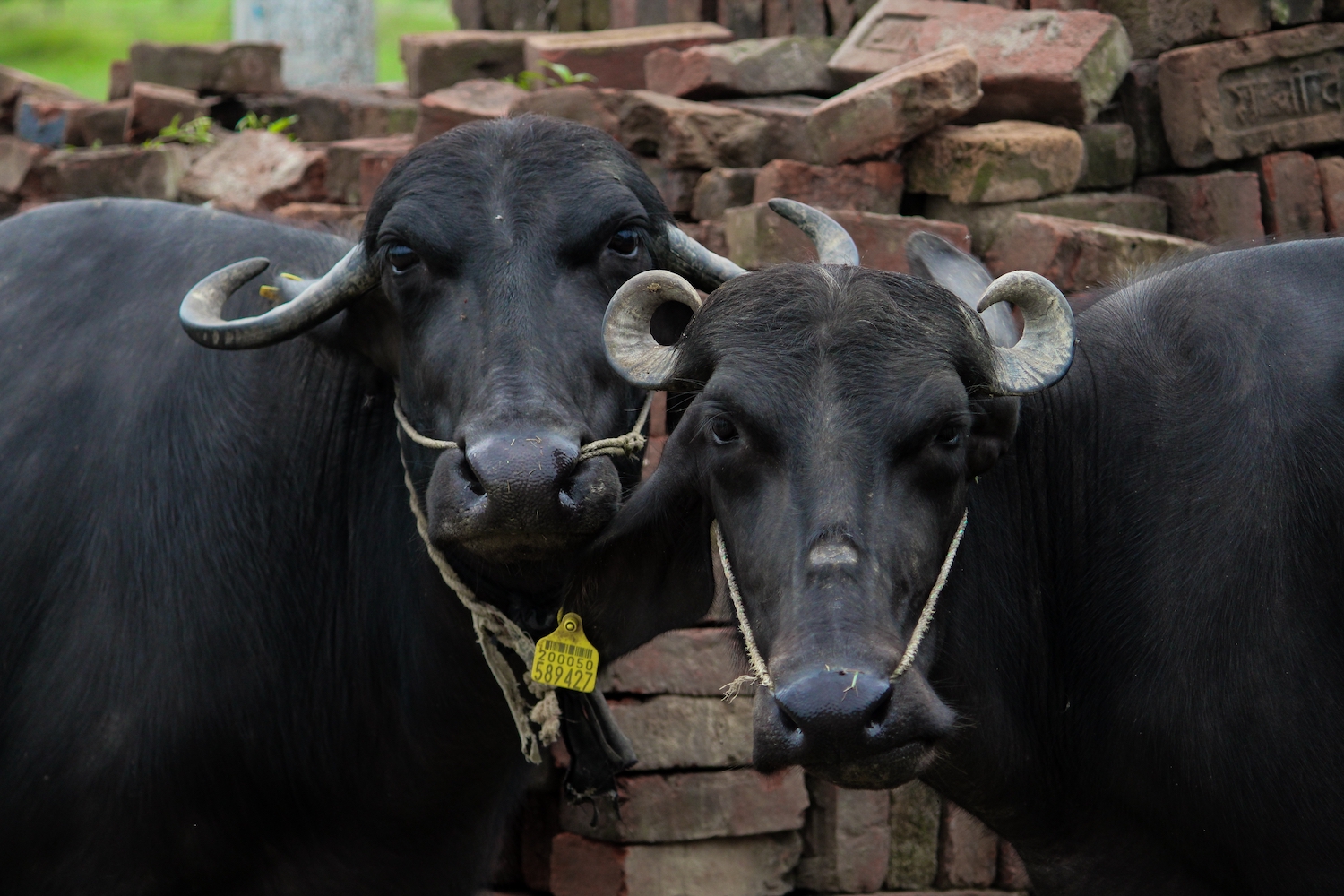
Animal based products (including dairy and poultry) have increasingly become a part of
our eating lifestyle, with dairy products finding its mention in staple diets across the
world. Globally,
more than 80% of the population or 6 billion
people are consuming milk and milk products,
with the majority of the consumers residing in the developing countries. In the last three
decades, world milk production has increased by more than
65%,from 530 million tonnes in 1988 to 883 million
tonnes in 2019 and is expected to increase by
35% by 2030.
With its increased demand and exponential rise in production, animal husbandry
is an integral part of the economy and provides employment opportunities to millions
across the globe.
The big question is why is everyone so worried about this sector, despite its
massive contribution to the economy???
The simple answer is METHANE!!!
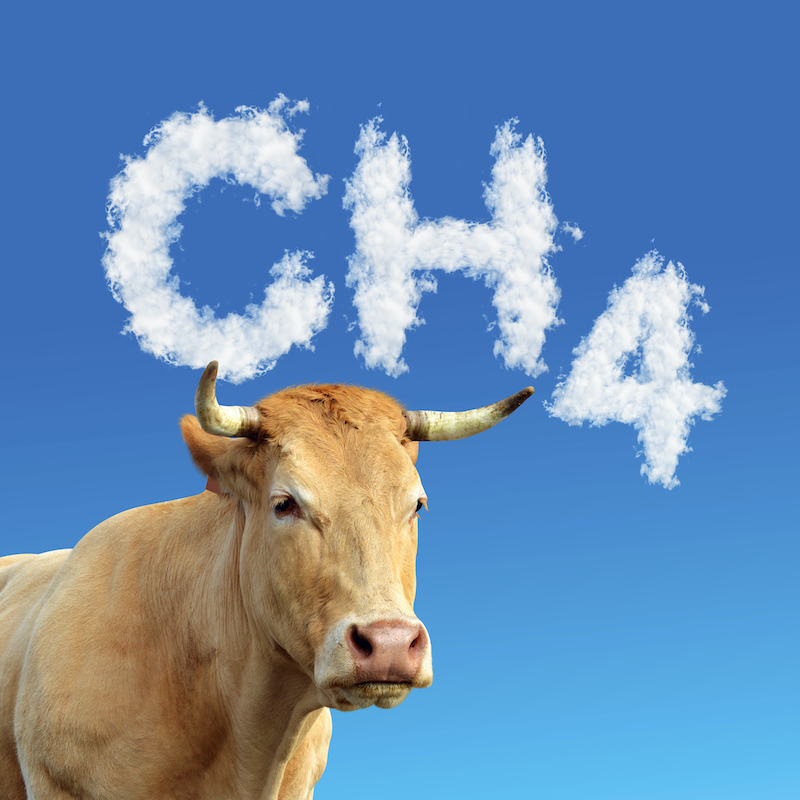
DANGER OF BURPS AND FARTS - A METHANE STORY
Traditionally, our requirements for milk and milk products have been satisfied by
livestock animals such as cows, buffaloes, goats and sheep (generally called
ruminants). These animals by simply grazing contribute to the second largest
contributor of global warming, i.e.
methane emissions. Ruminants generate methane in two main ways:
through their digestion and through their waste.
Currently, livestock production contributes
at least 14.5 % of all greenhouse gas emissions
If current production levels continue on the same trajectory, it is expected to
account for nearly 81% of emissions,
rising global temperatures by 1.5 degrees by 2050.
Globally, ruminant livestock produce about
3.3 gigatonne (Gt) CO2 eq. of methane annually.
Ruminants have a peculiar type of stomach with 4 different chambers.
When the ruminants graze, their swollen food is broken down by the
microorganisms present in these chambers into simpler sugars (a process known as
enteric
fermentation).The end product of this process includes carbon dioxide
and methane, which is then expelled from their bodies as
burps
and farts. Methane is also emitted by these animals through their
expelled waste.
Methane
is the second biggest source of global warming after carbon dioxide and
is estimated to be responsible for
23%
of all warming
caused by greenhouse gasses. Unlike carbon dioxide, which can survive in the
atmosphere for centuries, methane lingers for only around 12 years, but its
heat-trapping potential is about
80 times higher than that of carbon dioxide over a 20-year
timespan. Over the last two centuries,
methane concentrations in the atmosphere have more
than doubled,
largely due to human-related activities.
The burps and farts of ruminants are emitting this harmful greenhouse
gas just as a byproduct of a natural digestive process.
As a global average dairy
milk is responsible for 1.39 kilograms of CO2-equivalents
to the atmosphere for every liter produced Globally,
cattle account for 77% of methane emissions (2.5 Gt), buffalo for 13% (0.43 Gt)
and small ruminants (sheep and goats) for the remainder (0.31 Gt).

Source: Enteric fermentation process in cow (©2019 Let’s Talk Science)
IMPACT OF ANIMAL AGRICULTURE ON ENVIRONMENT, FOOD SUPPLY, AND PUBLIC HEALTH
Land use: Of the habitable land on earth that is available to us, 50% is used for agriculture. From this agricultural produce, 77% is used to feed livestock and just 23% is used to grow crops for human consumption. Yet, livestock only contributes 33% of our protein supply. Essentially, feeding crops to animals and then eating a part of the animal requires more crops than if we were to directly eat them. According to the World Resources Institute, it takes nine calories of feed to produce one calorie of chicken meat. And with so many crops being diverted to animal feed, it is also driving up the price of grains and legumes - furthering global poverty.

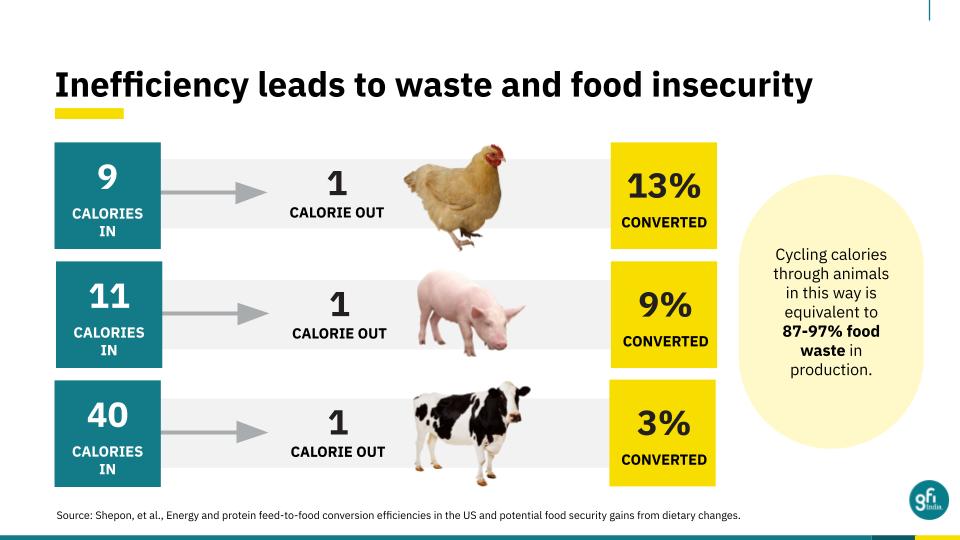
Water use: Animal products generally have a larger water footprint than crop products.The average water footprint per calorie for beef is 20x larger than for cereals and starchy roots. When we look at the water requirements for protein, it has been found that the water footprint per gram of protein for milk, eggs, and chicken is about 1.5x larger than for pulses. The Government of India’s think tank NITI Aayog has rung the alarm when it comes to water - citing that nearly 600 million Indians face high-to-extreme water stress or scarcity.
Public health: Across all three categories of smart protein (plant-based, cultivated, and fermentation-derived proteins) these foods do not require the use of antibiotics and eliminate the risk of zoonotic disease, making them far better for public health. This is particularly important for a country like India, where we’ve seen some of the worst impacts of the Covid-19 pandemic. India is also badly hit by malnutrition and a large amount of our population is unable to access nutritious food. In fact, across all countries in the world, India has the largest population of children and mothers who face undernutrition. Our population is also set to expand rapidly, increasing the difficulty of accessing adequate food and nutrition. Globally, we’re going to have to feed 10 billion people by 2050, and one-sixth of this population will be Indian.

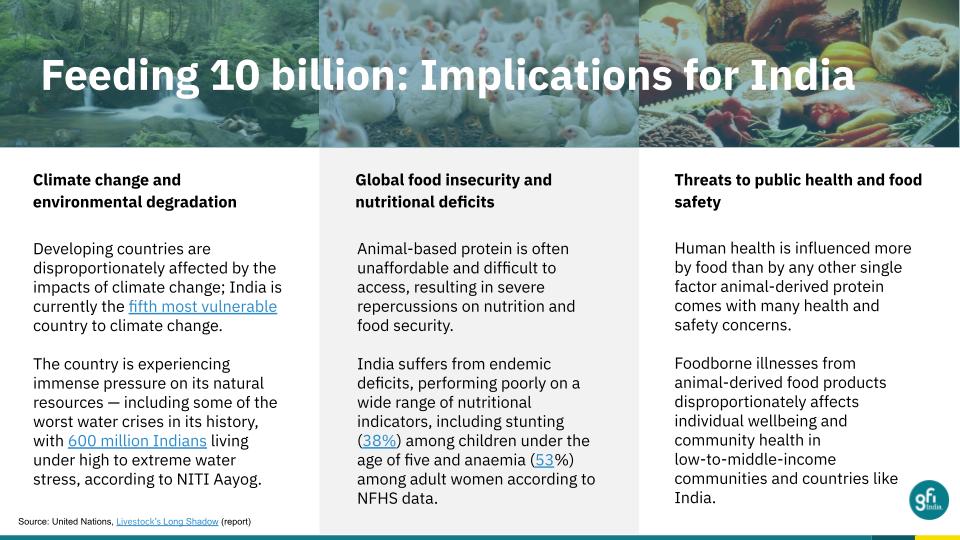
WHAT'S BOILING IN INDIA?
India is ranked 1st in milk production contributing
23% of global
milk production,
and has produced a record breaking 209 million tonnes in 2020-2021.To
support this production, India currently has the world’s
largest cattle and buffalo population. India’ s livestock
population is
535.78 million
accounting for over 37.28% of cattle, 21.23% of buffalo, 26.40% of goats
and 12.17% of sheep across the global livestock population.
It is not surprising that the livestock population has grown over 4.6% as compared to
past years in India, and the count of its cattle rose by 18%
in the last census (2012), a number that is expected to increase in the coming years.
India is not just leading in producing milk and milk products but is also home
to one of the largest consumer bases.

HOW MUCH METHANE IS TOO MUCH METHANE?
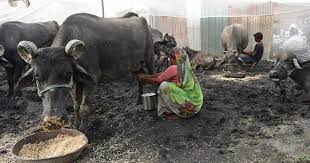
With a livestock count of over half a billion, India is the world's third-largest
emitter of methane.
India’s methane
emissions in 2016 were 409 million tonne CO2e
of which, 73.96% was from Agriculture sector, 14.46% from Waste sector, 10.62% from Energy
sector and 0.96% was from Industrial Processes and Product Use sector. Within the agriculture
sector,
livestock account for about
63% of all emissions through enteric fermentation, and 11.1% of the total GHG
emissions from various sectors in the country.
The Indian Government has acknowledged that enteric
fermentation is one of the two predominant sources of methane emissions in India.
An average lactating cow or buffalo in India emits around 200 litres of methane per day,
while it is 85-95 litres for young growing heifers and 20-25 litres for adult sheep.
India is home to
535.78 million livestock,
with ruminants emitting an estimated 9.25 million tonnes (Mt) to 14.2 Mt of methane
annually,
contributing to more than 15% of global enteric methane emissions.
CALL FOR ACTION
Animal husbandry is not just a leading contributor to global warming but also has
harmful and adverse impact on natural resources, biodiversity, health conditions of
consumers and inhumane treatment of livestock.
Various efforts are being initiated at world level to make our eating and
dietary lifestyle sustainable and healthy, with a rise in willingness of Indians to
switch to
plant
based protein/smart proteins.
A
cross-country survey by GFI India examined consumer acceptance of smart protein
and
found that 63% of Indian consumers are very or extremely likely to purchase plant-based
meat. This compared better than the results from consumer acceptance studied in the U.S.
and China.
Smart proteins are food products which can reliably and predictably substitute the
consumption of animal-derived meat, eggs, and dairy, because they perfectly replicate
the sensory and cultural experience for consumers, and drastically eliminate the GHG
emissions.